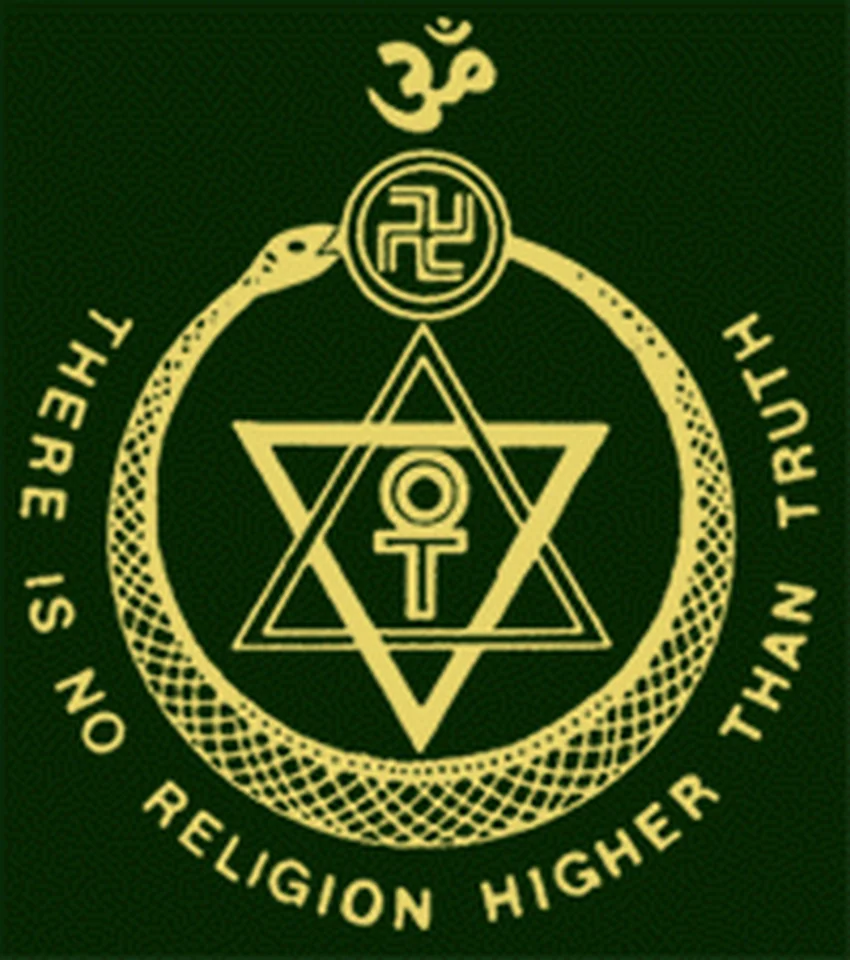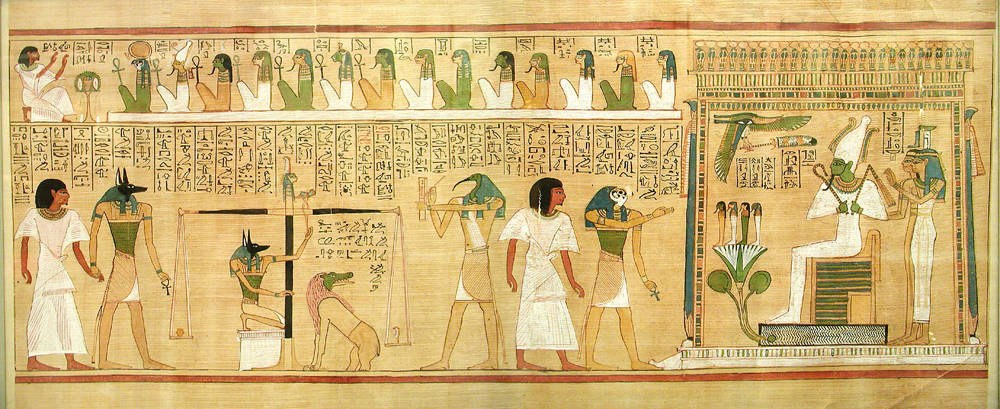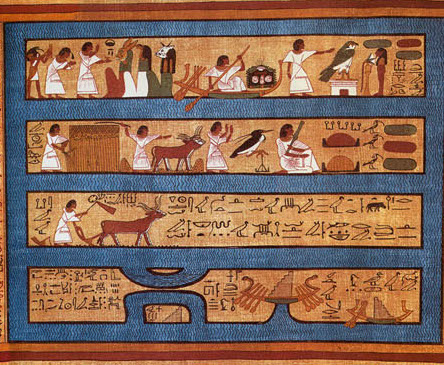|
The Summerland
The Summerland is the name given by Theosophists, Wiccans and other contemporary pagan religions to their conceptualization of an afterlife. History of the concept Emanuel Swedenborg (1688–1772) inspired Andrew Jackson Davis (1826–1910), in his major work ''The Great Harmonia'', to say that Summerland is the pinnacle of human spiritual achievement in the afterlife; that is, it is the highest level, or 'sphere', of the afterlife we can hope to enter. C.W. Leadbeater, a Theosophist, also taught that those who were good in their previous earthly incarnation went to a place called Summerland between incarnations.Leadbeater, C.W ''A Textbook of Theosophy'' 1912 Theosophy In Theosophy, the term "Summerland" is used without the definite article "the". Summerland, also called the Astral plane Heaven, is depicted as where souls who have been good in their previous lives go between incarnations. Theosophists believe the Summerlands are maintained by hosts of planetary angels serv ... [...More Info...] [...Related Items...] OR: [Wikipedia] [Google] [Baidu] |
Theosophy (Blavatskian)
Theosophy is a religion established in the United States during the late 19th century. It was founded primarily by the Russian Helena Blavatsky and draws its teachings predominantly from Blavatsky's writings. Categorized by scholars of religion as both a new religious movement and as part of the occultist stream of Western esotericism, it draws upon both older European philosophies such as Neoplatonism and Asian religions such as Hinduism and Buddhism. As presented by Blavatsky, Theosophy teaches that there is an ancient and secretive brotherhood of spiritual adepts known as the Masters, who—although found around the world—are centered in Tibet. These Masters are alleged by Blavatsky to have cultivated great wisdom and supernatural powers, and Theosophists believe that it was they who initiated the modern Theosophical movement through disseminating their teachings via Blavatsky. They believe that these Masters are attempting to revive knowledge of an ancient religion once fou ... [...More Info...] [...Related Items...] OR: [Wikipedia] [Google] [Baidu] |
Physical Plane
In esoteric cosmology, a plane is conceived as a subtle state, level, or region of reality, each plane corresponding to some type, kind, or category of being. The concept may be found in religious and esoteric teachings—''e.g.'' Vedanta ( Advaita Vedanta), Ayyavazhi, shamanism, Hermeticism, Neoplatonism, Gnosticism, Kashmir Shaivism, Sant Mat/ Surat Shabd Yoga, Sufism, Druze, Kabbalah, Theosophy, Anthroposophy, Rosicrucianism (Esoteric Christian), Eckankar, Ascended Master Teachings, etc.—which propound the idea of a whole series of subtle planes or worlds or dimensions which, from a center, interpenetrate themselves and the physical planet in which we live, the solar systems, and all the physical structures of the universe. This interpenetration of planes culminates in the universe itself as a physical structured, dynamic and evolutive expression emanated through a series of steadily denser stages, becoming progressively more material and embodied. The emanation ... [...More Info...] [...Related Items...] OR: [Wikipedia] [Google] [Baidu] |
Afterlife Places
The afterlife (also referred to as life after death) is a purported existence in which the essential part of an individual's identity or their stream of consciousness continues to live after the death of their physical body. The surviving essential aspect varies between belief systems; it may be some partial element, or the entire soul or spirit of an individual, which carries with it and may confer personal identity or, on the contrary, nirvana. Belief in an afterlife is in contrast to the belief in oblivion after death. In some views, this continued existence takes place in a spiritual realm, while in others, the individual may be reborn into this world and begin the life cycle over again, likely with no memory of what they have done in the past. In this latter view, such rebirths and deaths may take place over and over again continuously until the individual gains entry to a spiritual realm or otherworld. Major views on the afterlife derive from religion, esotericism an ... [...More Info...] [...Related Items...] OR: [Wikipedia] [Google] [Baidu] |
Otherworld
The concept of an otherworld in historical Indo-European religion is reconstructed in comparative mythology. Its name is a calque of ''orbis alius'' (Latin for "other Earth/world"), a term used by Lucan in his description of the Celtic Otherworld. Comparable religious, mythological or metaphysical Metaphysics is the branch of philosophy that studies the fundamental nature of reality, the first principles of being, identity and change, space and time, causality, necessity, and possibility. It includes questions about the nature of conscio ... concepts, such as a realm of supernatural beings and a realm of the dead, are found in cultures throughout the world.''Gods, goddesses, and mythology'', Volume 11, C. Scott Littleton, Marshall Cavendish, 2005, , . Pp. 1286-1287 Spirits are thought to travel between worlds, or layers of existence in such traditions, usually along an Axis mundi, axis such as a world tree, giant tree, a tent pole, a river, a rope or mountains. Indo-European ... [...More Info...] [...Related Items...] OR: [Wikipedia] [Google] [Baidu] |
Happy Hunting Ground
The happy hunting ground is a concept of the afterlife associated with Native Americans in the United States. The phrase most likely originated with Anglo-Saxon settlers' interpretation of the Indian description. History The phrase first appears in 1823 in The Pioneers by James Fenimore Cooper: Historian Charles L. Cutler suggests that Cooper "either coined or gave currency to" the use of the phrase "happy hunting ground" as a term for the afterlife. The phrase also began to appear soon after in the writing of Washington Irving. In 1911, Sioux physician Charles Eastman Charles Alexander Eastman (February 19, 1858 – January 8, 1939) was an American physician, writer, and social reformer. He was the first Native American to be certified in Western medicine and was "one of the most prolific authors and speakers ... wrote that the phrase "is modern and probably borrowed, or invented by the white man." References Lakota mythology Afterlife places {{NorthAm-my ... [...More Info...] [...Related Items...] OR: [Wikipedia] [Google] [Baidu] |
Bardo
In some schools of Buddhism, ''bardo'' ( xct, བར་དོ་ Wylie: ''bar do'') or ''antarābhava'' (Sanskrit, Chinese and Japanese: 中有, romanized in Chinese as ''zhōng yǒu'' and in Japanese as ''chū'u'') is an intermediate, transitional, or liminal state between death and rebirth. The concept arose soon after Gautama Buddha's death, with a number of earlier Buddhist schools accepting the existence of such an intermediate state, while other schools rejected it. The concept of ''antarābhava'', an intervening state between death and rebirth, was brought into Buddhism from the Vedic-Upanishadic (later Hindu) philosophical tradition. Later Buddhism expanded the bardo concept to six or more states of consciousness covering every stage of life and death. In Tibetan Buddhism, ''bardo'' is the central theme of the ''Bardo Thodol'' (literally ''Liberation Through Hearing During the Intermediate State''), the ''Tibetan Book of the Dead'', a text intended to both guide the recen ... [...More Info...] [...Related Items...] OR: [Wikipedia] [Google] [Baidu] |
Aaru
__NOTOC__ In ancient Egyptian mythology, Aaru (; egy, jꜣrw "Reeds, rushes"), known also as '' sḫt-jꜣrw'' or the Field of Reeds, is the heavenly paradise where Osiris rules. It has been described as the '' ka'' (a part of the soul) of the Nile Delta. The ancient Egyptians believed that the soul resides in the heart and so, upon death, the Weighing of the Heart occurred. Each human heart is weighed on a giant scale against an ostrich feather, which represents the concept of Maat. Those souls which balance the scales are allowed to start a long and perilous journey to the Field of Reeds, where they will exist in pleasure for all eternity. Hearts heavy with evil tip and fall into the crocodilian jaws of the demon Ammit. After this "second death", the soul is doomed to restlessness in Duat. The souls who qualify undergo a long journey and face many perils before reaching Aaru. Once they arrive, they enter through a series of gates. The exact number of gates varies accordi ... [...More Info...] [...Related Items...] OR: [Wikipedia] [Google] [Baidu] |
Arhat
In Buddhism, an ''arhat'' (Sanskrit: अर्हत्) or ''arahant'' (Pali: अरहन्त्, 𑀅𑀭𑀳𑀦𑁆𑀢𑁆) is one who has gained insight into the true nature of existence and has achieved ''Nirvana'' and liberated from the endless cycle of rebirth. Mahayana Buddhist traditions have used the term for people far advanced along the path of Enlightenment, but who may not have reached full Buddhahood. The understanding of the concept has changed over the centuries, and varies between different schools of Buddhism and different regions. A range of views on the attainment of arhats existed in the early Buddhist schools. The Sarvāstivāda, Kāśyapīya, Mahāsāṃghika, Ekavyāvahārika, Lokottaravāda, Bahuśrutīya, Prajñaptivāda, and Caitika schools all regarded arhats as imperfect in their attainments compared to buddhas.Sree Padma. Barber, Anthony W. ''Buddhism in the Krishna River Valley of Andhra''. 2008. p. 44Warder, A.K. ''Indian Buddhism'' ... [...More Info...] [...Related Items...] OR: [Wikipedia] [Google] [Baidu] |
Cosmos
The cosmos (, ) is another name for the Universe. Using the word ''cosmos'' implies viewing the universe as a complex and orderly system or entity. The cosmos, and understandings of the reasons for its existence and significance, are studied in cosmologya broad discipline covering scientific, religious or philosophical aspects of the cosmos and its nature. Religious and philosophical approaches may include the cosmos among spiritual entities or other matters deemed to exist outside the physical universe. Etymology The philosopher Pythagoras first used the term ''kosmos'' ( grc, κόσμος, Latinized ''kósmos'') for the order of the universe. Greek κόσμος "order, good order, orderly arrangement" is a word with several main senses rooted in those notions. The verb κοσμεῖν (''κοσμεῖν'') meant generally "to dispose, prepare", but especially "to order and arrange (troops for battle), to set (an army) in array"; also "to establish (a government or regime) ... [...More Info...] [...Related Items...] OR: [Wikipedia] [Google] [Baidu] |
Nirvana
( , , ; sa, निर्वाण} ''nirvāṇa'' ; Pali: ''nibbāna''; Prakrit: ''ṇivvāṇa''; literally, "blown out", as in an oil lampRichard Gombrich, ''Theravada Buddhism: A Social History from Ancient Benāres to Modern Colombo.'' Routledge) is a concept in Indian religions (Buddhism, Hinduism, Jainism, and Sikhism) that represents the ultimate state of soteriological release, the liberation from duḥkha and '' saṃsāra''. In Indian religions, nirvana is synonymous with ''moksha'' and ''mukti''. All Indian religions assert it to be a state of perfect quietude, freedom, highest happiness as well as the liberation from attachment and worldly suffering and the ending of ''samsara'', the round of existence.Gavin Flood, ''Nirvana''. In: John Bowker (ed.), '' Oxford Dictionary of World Religions'' However, non-Buddhist and Buddhist traditions describe these terms for liberation differently. In Hindu philosophy, it is the union of or the realization of the identity of ... [...More Info...] [...Related Items...] OR: [Wikipedia] [Google] [Baidu] |
Round (Theosophy)
A round, in the esoteric cosmology of Theosophy, Anthroposophy and Rosicrucianism, is a cosmic cycle or sequence by which an evolving reincarnating being passes through the various stages of existence as the Earth, the Solar System or the Cosmos comes into and passes out of manifestation. Theosophy In Theosophy, a round is a process in a planetary chain, according to which a life cycle or life-wave of souls or monads begins its evolutionary journey on the first and most subtle or spiritual of the series of seven globes; then finishing its evolution there, proceeds to the next, and so on, to the densest or most manifest globe (usually called globe D), which in our case is the gross, physical Earth. From there it proceeds on the ascending arc, through increasingly more ethereal globes. Each of these globes are in coadunition with the physical Earth, though they are not in consubstantiation with it. Each of these stages is called a ''round'', and during this time the reincarnating ... [...More Info...] [...Related Items...] OR: [Wikipedia] [Google] [Baidu] |
Initiation (Theosophy)
Initiation is a concept in Theosophy that there are nine levels of spiritual development that beings who live on Earth can progress upward through. Within these levels, there are four basic levels of spiritual development that human beings on Earth progress through as they reincarnate, although evil acts may cause bad karma which may cause one to temporarily regress. It is believed that when souls have advanced to the fourth level of initiation, they have reached enlightenment and have no further need to reincarnate. At the fifth level of initiation and beyond, souls have the opportunity to become members of the Spiritual Hierarchy. This concept was developed by both C. W. Leadbeater and Alice A. Bailey beginning in the 1920s. According to C.W. Leadbeater, ''Initiation'' is a process by which "we try to develop ourselves not that we may become great and wise, but that we may have the power and knowledge to work for humanity to the best effect." According to Alice A. Bai ... [...More Info...] [...Related Items...] OR: [Wikipedia] [Google] [Baidu] |







